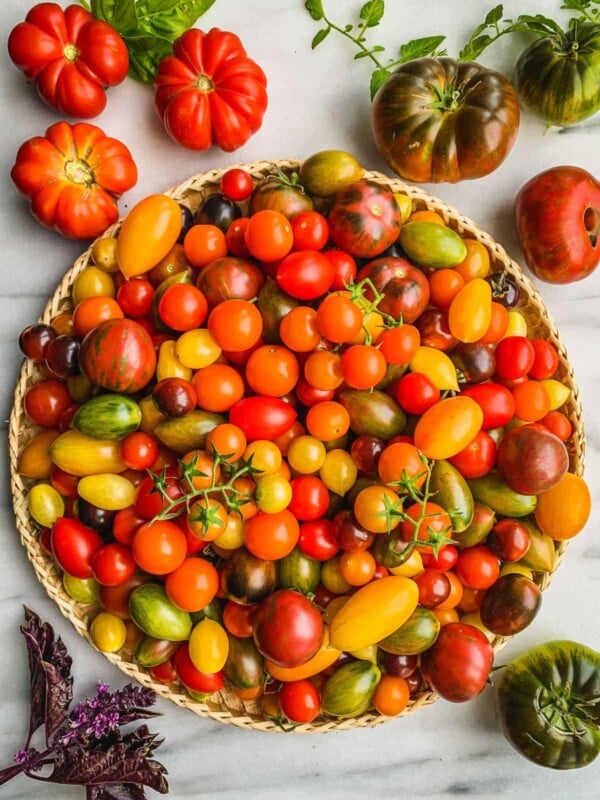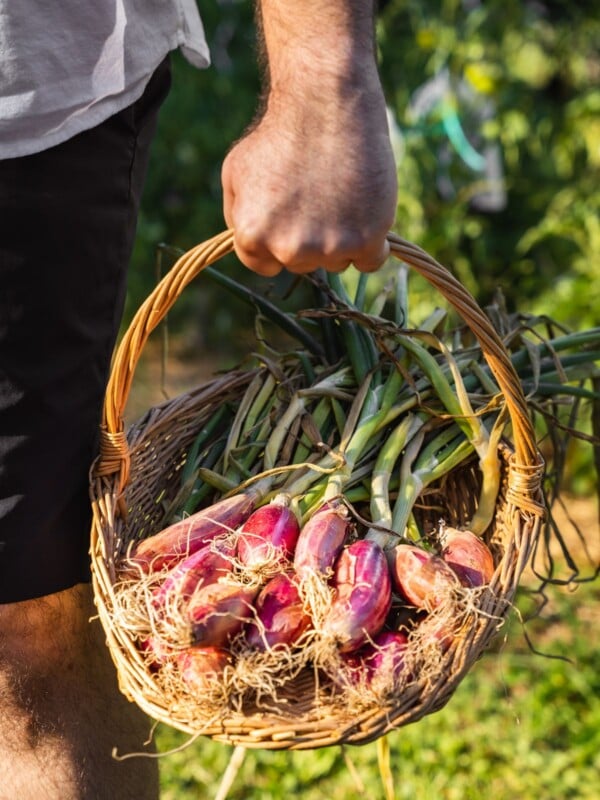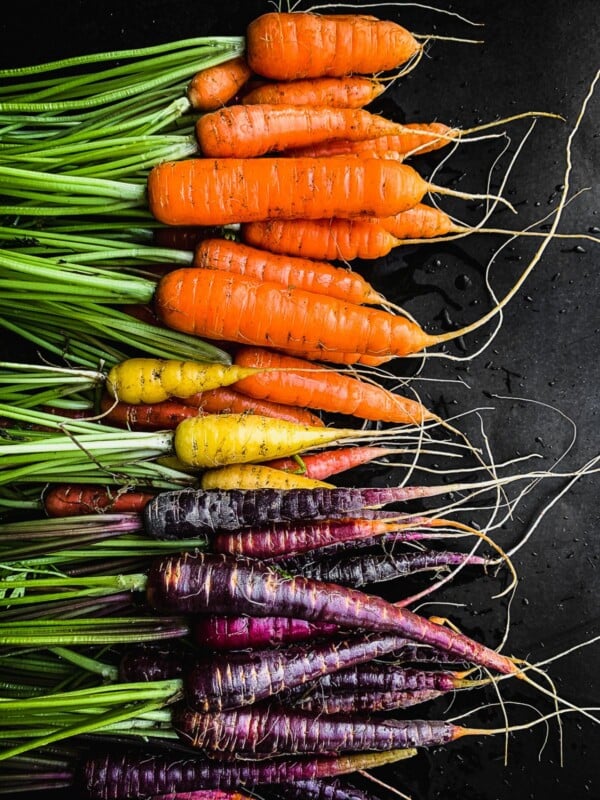If you’re starting out and new to seed starting, some of the terminology might be overwhelming and even worrying. This article will give you a clear and concise breakdown of GMO, Hybrids, Heirlooms and Open-pollinated seeds.
Open Pollinated Seeds
Open pollination or open pollinated refers to seeds that will breed true either by birds, insects, wind or even humans. When plants of an open-pollinated variety self pollinate or are pollinated by the the same varietal, they will generate seeds that will produce plants identical (or almost identical) to their parents.
There are many open pollinated varieties out there. Some of your favorite crops are probably open pollinated. The wonderful thing about growing open pollinated varieties is that you can let your plants go to seed so that you can harvest and save it for future use. It’s also a great way to share seeds with friends.


There are many benefits to growing open pollinated varieties. They tend to be more cost effective (whereas hybrid seeds require specialized breeding and production techniques), they are tried and true and therefore we know exactly what we will get from them and they are of course tasty. The downside to open pollinated varieties is that they may not be disease or pest resistant like some of the hybrids available on the market (more on that later)
Heirloom Seeds
Heirlooms are “old world” varieties that have existed for many years, passed down from one generation of gardeners to the next, because of their distinctive qualities (like taste, shape, growth habit, etc.). Although there isn’t a set standard that is recognized all over the world, for a variety to be considered heirloom it must be stable and have been bred for many years. Some will say 50 years is sufficient to grant a variety the heirloom label. Others will say 100 years is the minimum.
I find that most home gardeners think of tomatoes when they see the word heirloom. Heirloom tomatoes tend to look the least like your standard red globe tomato and come in many shapes and sizes. Many people swear that they taste better too (and I agree!). They are fun to grow and add lots of color and texture to your dinner table. After all, we are growing tomatoes so we can eat them, right? Who wants to eat boring round red tomatoes all the time?


There is a trend lately to slap the Heirloom label on everything to make it sound quaint or cute or to tug on our gardening heartstrings. I find it completely disingenuous. It is false advertising and bad marketing in my opinion. Varieties that are relatively new hybrids and that are stable open-pollinated should be called just that! Stable open pollinated! But this is just my opinion and I’m sure others will disagree with me.
So in summary, heirlooms are generally open pollinated but not all open pollinated varieties are necessarily heirlooms.
Hybrid Seeds
Hybrids are varieties that have been specifically bred for certain traits like disease resistance, fruit shape, color, growth habit, high yield or other characteristic. Many people confuse hybrids with GMO but more on that in a bit. Hybrids are produced by crossing 2 plants to produce offspring that has desirable traits.
You will often see a label of F1 given to a hybrid variety. This means that the seed is the first filial generation of offspring of distinctly different parental types. Seeds from Hybrid tomatoes can be saved and replanted but will not produce the same hybrid variety. They will produce a plant that more closely resembles one of the parental types.

Whenever I explain this to someone I like to use the analogy of dog breeding. A Labradoodle is a crossbreed dog created by crossing the Labrador Retriever and the Standard, Miniature, or Toy poodle. The end result is still a cute and loveable pet. It is not something that should be viewed as wrong. All this to say is that hybrid seeds should not be feared.
Hybrids can come about in different ways. They can be created accidentally. For example planting 2 varieties of tomatoes close to each other may result in fruit with hybrid seed. Although tomatoes are self fertile there’s still a small possibility of the wind, an insect or pollinator transferring pollen from one variety to the pistil of the other variety.
They can also be created with human intervention. Many seed companies have breeding programs. Just like any business, they want to provide their customers with new and exciting varieties.
Legal issues with certain hybrids
Some hybrids are also patented by their owners so you cannot save their seed or you’ll be in violation of their copyright. One of my favorite lettuce varieties is Salanova from Johnny’s Seeds. I grow it from seed every year. It is patented (Utility Patent). This means that it would be illegal to let it go to flower and save the seed. This is why I personally purchase these seeds every year. It is important to make sure that your gardening hobby doesn’t turn into a potential headache.
I personally grow quite a few hybrids for various reasons (disease resistance, yield and selection). Check out my 2020 Tomato Review Here.
Genetically Modified Organisms (GMO)
While hybrids are created through selective breeding (crossing plant A with plant B) , GMOs tend to be produced using high tech methods (gene splicing). The distinction here is that GMOs are varieties that do not occur naturally whereas hybrids occur through selective breeding. It is important to note that GMO seeds are not available to regular gardeners. Only commercial farmers can purchase GMO seeds (most common GMO seeds are corn, canola, soy and alfalfa).
If I were you, I’d be more worried about consuming processed foods with high fructose corn syrup. I’d also try and source non-GMO soy and tofu products. Seed packs labeled non-GMO are also misleading because as I said, GMO seeds are NOT available for non-commercial consumers like home gardeners. I do recommend you do your own research if this is a topic that is important to you.












Hi, Salanova appears to be in “Plant Variety Protected” status (Johnny’s Selected Seeds literature), which has an exemption for seed savers that have legally purchased it to save it for the sole use of replanting on their land. USDA: https://www.ams.usda.gov/services/plant-variety-protection/pvpo-frequently-asked-questions Look at #16.
That’s a good point. However, Salanova is sold in many countries so the USDA exemptions do not apply.